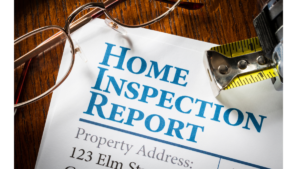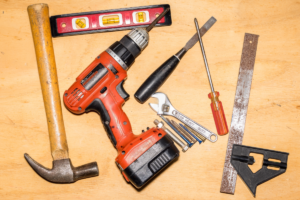Top Strategies to Boost Your Home Sale: Vital Tips and a Seller’s Home Inspection Checklist
Top Strategies to Boost Your Home Sale: Vital Tips and a Seller’s Home Inspection Checklist
Selling a home can be both exciting and daunting. You’ve invested time, effort, and emotions into your property, and now it’s time to make it appealing to potential buyers. To maximize your chances of a successful sale, you need a comprehensive strategy that includes preparing your home for the market and ensuring it stands out. Home inspection is a critical aspect of the selling process, which can either make or break a deal. In this blog, we will delve into the top strategies to boost your home sale and provide a seller’s home inspection checklist to help you ace the inspection process.
Curb Appeal: Creating a Lasting First Impression
The phrase “Don’t judge a book by its cover” might hold for some situations, but when selling a home, first impressions matter significantly. Curb appeal refers to the visual attractiveness of a property’s exterior when viewed from the street. It is crucial to create a lasting first impression on potential buyers. A well-maintained and visually appealing body can attract more interested buyers and add value to the property. This section will explore key points to help you create a lasting first impression through curb appeal, ensuring your home stands out in a competitive real estate market.
1. Landscaping: The Foundation of Curb Appeal
Landscaping forms the foundation of curb appeal and sets the tone for your property’s exterior. Consider these essential landscaping tips:
- Lawn Care: Regularly mow, trim, and edge the lawn to maintain its neat appearance.
- Plant Selection: Choose plants, flowers, and shrubs that are well-suited for your climate and complement the architectural style of your home.
- Mulching: Applying fresh mulch enhances the visual appeal, helps retain soil moisture, and suppresses weed growth.
2. Exterior Repairs: Fixing the Imperfections
Before putting your home on the market, it’s crucial to address any visible exterior issues to create a positive impression on potential buyers:
- Siding and Paint: Repair or replace damaged siding and touch up the paint where necessary. A fresh coat of paint can give your home a revitalized look.
- Roof and Gutters: Inspect the roof for missing or damaged shingles, and clean the gutters to ensure proper drainage.
- Fences and Gates: Repair or repaint walls and gates, enhancing the security and aesthetics of your property.
3. Entryway Enhancements: Inviting Buyers In
The entryway is the focal point of your home’s exterior and can significantly impact a buyer’s first impression. Pay attention to the following:
- Front Door Upgrade: Consider painting the front door with a bold and inviting color, or replace it with a new, stylish option.
- Porch Revamp: Clean the porch area thoroughly, add tasteful decorations, and create a welcoming ambiance with comfortable seating.
- Adequate Lighting: Install outdoor lighting to illuminate the entryway, creating a warm and safe environment during evening viewings.
4. Windows and Shutters: The Eyes of the Home
Windows and shutters are essential architectural elements that contribute to your home’s overall appearance:
- Clean Windows: Ensure that windows are spotless, allowing natural light to flood the interior and make rooms more inviting.
- Stylish Shutters: If your home has shutters, ensure they are well-maintained and complement the house’s overall design.
5. Driveway and Walkways: Smooth and Inviting Transitions
Driveways and walkways provide the physical pathways to your home, and they should be well-maintained and visually appealing:
- Repair and Resurface: Fill any cracks or potholes on the driveway and walkways, and consider resurfacing if necessary.
- Landscaping Along Paths: Plant flowers or add shrubs along walkways to create a pleasant journey to the front door.
Curb appeal is crucial in attracting potential buyers and setting the stage for a successful home sale. By focusing on landscaping, addressing exterior repairs, enhancing the entryway, maintaining windows and shutters, and improving the driveway and walkways, you can significantly enhance your home’s visual appeal and make a lasting first impression on prospective buyers. A well-maintained and inviting exterior will attract more interest and potentially lead to a quicker sale at a better price. So, invest the time and effort in enhancing your home’s curb appeal, and you’ll be one step closer to a successful and rewarding home-selling experience.
Home Staging: Presenting Your Property at Its Best
Home staging is an essential aspect of the home-selling process. It involves preparing and presenting your property in a way that appeals to potential buyers and showcases its full potential. A well-staged home can significantly impact buyers’ perception, increasing interest and potentially higher offers. In this section, we will explore key points to help you master the art of home staging and present your property at its best, ensuring a successful and smooth selling experience.
 1. Depersonalization and Decluttering: Creating a Blank Canvas
1. Depersonalization and Decluttering: Creating a Blank Canvas
Depersonalizing your home is the first step in home staging. This involves removing personal items and family photos, allowing potential buyers to envision themselves living in the space. Key tips include:
- Remove Personal Items: Clear countertops, shelves, and walls of personal items to create a clean and neutral space.
- Declutter: Get rid of unnecessary items and organize closets and storage spaces to create a sense of openness.
2. Furniture Arrangement: Maximizing Space and Flow
Proper furniture arrangement can make a significant difference in how buyers perceive the size and functionality of your home. Consider the following:
- Create a Flow: Arrange furniture to create a logical flow through each room, making it easy for buyers to navigate.
- Highlight Functionality: Showcase the purpose of each room by arranging furniture in a way that emphasizes its function.
3. Color and Lighting: Setting the Right Ambiance
Colors and lighting can greatly impact the mood and atmosphere of a home. When staging, consider the following:
- Neutral Palette: Use neutral colors on walls and furnishings to create a calming and inviting environment.
- Natural Light: Open curtains and blinds to let in natural light, making rooms appear more spacious and cheerful.
- Adequate Lighting: Ensure each room has sufficient lighting to showcase its best features, especially during evening showings.
4. Decor and Accessories: Adding the Finishing Touches
Thoughtful decor and accessories can enhance the overall appeal of your home. Keep these tips in mind:
- Accentuate Key Features: Use decor to draw attention to the property’s architectural highlights or unique selling points.
- Minimalism: Avoid overdecorating; opt for a minimalist approach to allow buyers to focus on the home’s features.
5. Home Staging for Vacant Properties: Bringing Life to Empty Spaces
Staging vacant properties is essential to help buyers visualize the potential of empty rooms. Consider these strategies:
- Rent Furniture: Renting furniture and decor can bring warmth and personality to an otherwise space.
- Virtual Staging: Use virtual staging to insert furniture and decor into listing photos digitally, giving buyers a better sense of space.
6. Outdoor Spaces: Extending the Appeal
Don’t forget to stage your outdoor spaces to create an attractive and inviting environment:
- Enhance Curb Appeal: Maintain the front yard, add potted plants, and ensure the entryway is welcoming.
- Backyard Retreat: Stage the backyard as a relaxing retreat, showcasing its potential for outdoor living and entertaining.
Home staging is a powerful tool that can significantly impact the success of your home sale. By depersonalizing and decluttering, arranging furniture strategically, using colors and lighting effectively, adding tasteful decor and accessories, and staging both vacant and outdoor spaces, you can create a home that appeals to a broad range of potential buyers. Remember, home staging aims to present your property at its best, allowing buyers to envision themselves living in the space and ultimately leading to a successful and profitable home sale. So, invest the time and effort into home staging, and you’ll be well on your way to a successful and rewarding selling experience.
Strategic Pricing: Finding the Sweet Spot
Pricing your home strategically is a critical factor that can significantly impact the success of your home sale. Finding the sweet spot in pricing involves setting a price that attracts potential buyers, maximizes your home’s value, and ensures a timely deal. Overpricing can deter buyers and lead to prolonged time on the market while underpricing can result in financial losses. This section will explore key points to help you navigate the strategic pricing process, enabling you to find the perfect balance and achieve a successful home sale.
1. Real Estate Market Analysis: Understanding the Local Market
Conducting a thorough real estate market analysis is the foundation of strategic pricing. Consider these aspects:
- Comparable Properties: Research recently sold homes in your area similar to yours in size, condition, and location.
- Current Market Conditions: Understand whether it’s a buyer’s or seller’s market, as this can influence your pricing strategy.
- Pricing Trends: Analyze how property prices have changed in your neighborhood over the past few months to identify any patterns.
2. The Role of Real Estate Agents: Leveraging Their Expertise
Enlisting the help of a real estate agent can be invaluable in setting the right price for your home. Their expertise includes:
- Local Market Knowledge: Agents have access to up-to-date market data and insights that can inform your pricing decision.
- Pricing Strategy: A skilled agent can recommend a pricing strategy that aligns with your goals and market conditions.
- Negotiation Skills: Agents can negotiate on your behalf to ensure you get the best possible price for your home.
3. Pricing Strategies: Influencing Buyer Perceptions
Employing effective pricing strategies can shape how buyers perceive your property. Consider the following approaches:
- Competitive Pricing: Setting a price slightly below the market value can attract more buyers and potentially lead to multiple offers.
- Premium Pricing: If your home boasts unique features or upgrades, pricing it slightly above comparable properties may position it as a premium offering.
- Psychological Pricing: Utilize pricing psychology techniques, such as setting a price just below a round number (e.g., $499,000 instead of $500,000), to create the perception of a lower price.
4. Timing the Market: Seizing the Right Moment
Timing is crucial in real estate; timing can positively impact your home sale. Consider the following factors:
- Seasonal Trends: In some markets, certain seasons may be more favorable for selling, such as spring, when buyer demand peaks.
- Economic Conditions: Monitor the overall economic climate, as it can influence buyer confidence and purchasing power.
5. The Importance of Flexibility: Adjusting the Price
Remaining flexible with your pricing strategy is essential to adapt to market changes and buyer feedback:
- Monitor Market Response: Keep a close eye on how potential buyers respond to your initial price and be prepared to adjust if needed.
- Reevaluate if Necessary: If your home doesn’t receive sufficient interest or offers within a reasonable timeframe, reevaluate your pricing strategy.
Strategic pricing is a crucial aspect of the home selling process, and finding the sweet spot can make all the difference in a successful sale. By conducting a thorough real estate market analysis, leveraging the expertise of a real estate agent, employing effective pricing strategies, considering the right timing, and remaining flexible throughout the process, you can position your home to attract potential buyers and achieve a timely and profitable sale. Remember, setting the right price from the beginning is key, as an accurately priced home can generate more interest and lead to a smoother negotiation process. So, take the time to price your home strategically, and you’ll be well on your way to a successful and rewarding home-selling experience.
Pre-Listing Home Inspection: Getting Ahead of the Game
A pre-listing home inspection is a proactive step that can give you a competitive advantage when selling your home. Rather than waiting for a buyer’s appraisal to reveal any issues, a pre-listing inspection allows you to identify and address potential problems before listing your property. This boosts your home’s appeal to buyers, streamlines the negotiation process, and instills confidence in potential buyers. In this section, we will explore key points highlighting the importance of a pre-listing home inspection and how it helps you get ahead of the game in the home-selling process.
 1. Identifying Potential Issues: Knowing What to Expect
1. Identifying Potential Issues: Knowing What to Expect
A pre-listing inspection conducted by a qualified home inspector provides an unbiased assessment of your property’s condition. Key areas covered include:
- Structural Integrity: Identifying any foundation, roofing, or structural issues needing attention.
- Electrical and Plumbing: Ensuring that electrical systems and plumbing are properly working.
- HVAC Systems: Assessing the functionality of heating, ventilation, and air conditioning systems.
2. Addressing Repairs Proactively: Enhancing Buyer Confidence
Once the pre-listing inspection report is available, you can address any identified issues before listing your home. Benefits include:
- Improved Perception: Demonstrating that you have taken the initiative to address potential problems can boost buyer confidence.
- Smoother Negotiations: By addressing issues in advance, you can avoid potential conflicts during the negotiation process.
3. Accurate Pricing: Setting the Right Value
A clear understanding of your home’s condition allows for more accurate pricing. Key benefits include:
- Avoiding Surprises: With a pre-listing inspection, there are fewer chances of discovering major issues later that could affect your pricing strategy.
- Justification for Pricing: A detailed inspection report can help justify your home’s value to potential buyers.
4. Marketing Advantage: Standing Out in the Market
A pre-listing inspection can give your property a competitive edge. Consider the following marketing advantages:
- Transparency: Demonstrating transparency by sharing the inspection report with potential buyers can increase trust.
- Faster Sale: Buyers may be more willing to make offers on a property with a pre-listing inspection report, leading to a quicker sale.
5. Flexibility in Repairs: Deciding What to Fix
After receiving the inspection report, you can choose which repairs to address and which to disclose to potential buyers. Consider these points:
- Essential Repairs: Focus on addressing critical issues that could significantly impact the home’s safety or habitability.
- Cosmetic Upgrades: You may address minor cosmetic issues to enhance your home’s overall appearance.
6. Choosing the Right Inspector: Ensuring a Thorough Assessment
Selecting a reputable and experienced home inspector is crucial. Consider the following factors:
- Credentials: Look for inspectors with relevant certifications and licenses.
- Experience: Choose an inspector with a track record of thorough and accurate assessments.
A pre-listing home inspection is a proactive approach that can set you up for home-selling success. You can boost buyer confidence and streamline negotiations by identifying potential issues, addressing repairs proactively, accurately pricing your home, gaining a marketing advantage, and having the flexibility to choose which repairs to handle. Additionally, selecting the right inspector ensures a comprehensive assessment of your property’s condition. So, get ahead of the game with a pre-listing home inspection, and you’ll be well-prepared to present your home in the best possible light to potential buyers.
Repairs and Upgrades: Investing Wisely
Repairs and upgrades are crucial in preparing your home for sale and maximizing its appeal to potential buyers. Knowing which repairs are essential and which upgrades add value can help you invest wisely, ensuring a higher return on investment and a smoother home-selling process. This section will explore key points to help you make informed decisions about repairs and upgrades, enabling you to present your home in the best possible light and attract more buyers.
1. Prioritizing Repairs: Tackling Essential Fixes
Addressing essential repairs is the first step in preparing your home for sale. Focus on the following areas:
- Structural Integrity: Fix any foundational issues, roofing problems, or structural concerns that could raise red flags during a home inspection.
- Electrical and Plumbing: Ensure that electrical systems and plumbing work properly to enhance buyer confidence.
- Safety Hazards: Identify and remedy any safety hazards, such as loose handrails, mold, or faulty wiring.
2. DIY vs. Professional Services: Knowing When to Seek Help
While some repairs can be tackled as DIY projects, others require professional expertise. Consider the following:
- DIY: Simple tasks like painting, minor landscaping, or replacing hardware can often be done by homeowners to save costs.
- Professionals: Complex repairs or those involving specialized skills, such as electrical or plumbing work, are best left to professionals.
3. Value-Adding Upgrades: Enhancing Your Home’s Appeal
Strategic upgrades can add value to your home and attract more potential buyers. Focus on promotions that have a high return on investment:
- Kitchen Renovation: To create a modern and attractive space, consider updating kitchen cabinets, countertops, and appliances.
- Bathroom Remodeling: Upgrading bathroom fixtures, adding a fresh coat of paint, and enhancing lighting can significantly improve the bathroom’s appeal.
- Curb Appeal Enhancements: Investing in landscaping, exterior painting, and enhancing the entryway can boost your home’s curb appeal.
4. Energy-Efficient Improvements: Appealing to Eco-Conscious Buyers
Eco-conscious buyers are increasingly interested in energy-efficient homes. Consider the following improvements:
- Energy-Efficient Windows: Installing energy-efficient windows can reduce heating and cooling costs and appeal to environmentally conscious buyers.
- Insulation Upgrades: Insulation to walls, attics, and crawl spaces improves energy efficiency and can be an attractive selling point.
5. Budgeting Wisely: Maximizing ROI
Setting a budget for repairs and upgrades is essential to avoid overspending. Consider the following budgeting tips:
- Focus on High-Impact Projects: Prioritize repairs and upgrades that significantly impact your home’s overall appeal.
- Get Multiple Quotes: When hiring professionals for repairs or upgrades, obtain multiple quotes to ensure competitive pricing.
6. Timing: Completing Repairs Before Listing
Completing repairs and upgrades before listing your home can save time during negotiations and inspections. Consider the following timing tips:
- Pre-Listing Inspections: Conduct a pre-listing home inspection to identify and address repairs upfront before listing.
- Early Planning: Begin planning for repairs and upgrades well in advance to allow ample time for completion.
Investing wisely in repairs and upgrades is critical to preparing your home for sale. By prioritizing essential maintenance, knowing when to seek professional help, focusing on value-adding upgrades, appealing to eco-conscious buyers, budgeting wisely, and completing repairs before listing, you can enhance your home’s appeal and attract more potential buyers. Making informed decisions about repairs and upgrades increases your home’s market value and streamlines the selling process, potentially leading to a faster and more profitable sale. So, take the time to invest wisely in repairs and upgrades, and you’ll be well on your way to a successful and rewarding home-selling experience.
Showcasing Your Home Online: The Power of Digital Marketing
In the digital age, showcasing your home online has become indispensable to home selling. With most homebuyers starting their property search online, having a strong digital presence is essential to attract potential buyers and stand out in a competitive market. Leveraging digital marketing strategies allows you to present your home in the best possible light and reach a broader audience of interested buyers. In this section, we will explore key points that highlight the power of digital marketing in showcasing your home online and maximizing your chances of a successful sale.
 1. High-Quality Photography: Capturing the Best Features
1. High-Quality Photography: Capturing the Best Features
High-quality photography is the foundation of effective digital marketing for your home. Key considerations include:
- Professional Photography: Hiring a professional photographer ensures your home’s best features are highlighted through high-resolution images.
- Virtual Tours: Incorporating virtual tours allows potential buyers to explore your home from the comfort of their devices, increasing engagement.
2. Compelling Descriptions: Telling a Story
Accompanying your photos with compelling descriptions can create an emotional connection with potential buyers:
- Highlighting Features: Emphasize your home’s unique and attractive features to capture buyers’ attention.
- Storytelling: Craft a narrative showcasing the potential and benefits of living in your home and the surrounding area.
3. Video Tours: Bringing Your Home to Life
Video tours are a dynamic way to showcase your home’s layout and flow. Consider:
- Professional Videography: Hiring a professional videographer ensures a smooth and engaging presentation.
- Interactive Elements: Adding interactive elements to videos, such as hotspots with additional information, can enhance the viewing experience.
4. Social Media and Online Listings: Expanding Your Reach
Utilizing social media and online listing platforms allows you to reach a wider audience:
- Social Media Marketing: Promote your home on various social media platforms to attract potential buyers and generate shares for increased visibility.
- Online Listing Websites: Ensure your home is listed on popular real estate websites to increase exposure and reach more buyers.
5. Virtual Staging: Enhancing Empty Spaces
Virtual staging is a cost-effective way to showcase the potential of vacant properties:
- Digitally Furnished Spaces: Virtual staging digitally adds furniture and decor to create a warm and inviting atmosphere for buyers.
- Cost Savings: Virtual staging is more affordable than traditional staging, making it an attractive option for empty properties.
6. User-Friendly Website: Creating a Professional Online Presence
A user-friendly website dedicated to your home’s listing can create a professional and cohesive online presence:
- Property-Specific Page: Create a dedicated page for your home that features all relevant information, photos, and videos.
- Contact Information: Include clear contact details to make it easy for interested buyers to reach out.
Digital marketing is a powerful tool that can significantly impact the success of your home sale. You can effectively showcase your home online and attract more potential buyers by utilizing high-quality photography, compelling descriptions, video tours, social media marketing, online listing platforms, virtual staging, and creating a user-friendly website. Embracing digital marketing allows you to reach a broader audience, generate more interest in your property, and potentially lead to a quicker and more profitable sale. So, take advantage of the power of digital marketing to showcase your home in the best possible light, and you’ll be on your way to a successful and rewarding home selling experience.
The Home Inspection Checklist for Sellers
A home inspection is a crucial step in the home-buying process, and as a seller, being proactive in preparing for the examination can be beneficial. You can increase buyer confidence and streamline the negotiation process by conducting your pre-inspection and addressing potential issues beforehand. In this section, we will explore the key points of a home inspection checklist for sellers, helping you present your home in the best possible condition and maximize your chances of a successful sale.
1. Exterior Inspection: Curb Appeal Matters
Start with the exterior of your home, as it creates the first impression for potential buyers:
- Roof: Inspect for missing or damaged shingles and address leaks or water damage.
- Gutters: Clean gutters of debris and ensure they are securely attached to the home.
- Siding and Paint: Check for any peeling paint or damaged siding, and consider repainting if necessary.
- Foundation: Look for cracks or settling issues in the foundation and consult a professional if needed.
2. Interior Inspection: Create a Welcoming Environment
The interior of your home should be inviting and well-maintained:
- Plumbing: Check for any leaks or dripping faucets and fix any issues with water pressure.
- Electrical: Ensure all electrical outlets and switches are in working order and replace any faulty ones.
- HVAC Systems: Have your heating and cooling systems inspected and serviced by a professional.
- Windows and Doors: Check for proper functioning and make necessary repairs or adjustments.
- Appliances: Ensure all devices are in working condition, including ovens, refrigerators, and dishwashers.
3. Attic and Basement: Uncover Hidden Issues
Don’t forget to inspect areas like the attic and basement:
- Attic: Check for signs of water leaks, proper insulation, and adequate ventilation.
- Basement: Look for any signs of moisture or water intrusion and address any potential mold issues.
4. Structural and Safety Concerns: Ensure a Safe Environment
Safety should be a top priority for any home:
- Smoke and Carbon Monoxide Detectors: Check that smoke and carbon monoxide detectors are functional and have fresh batteries.
- Handrails and Staircases: Ensure all staircases have secure handrails and are free of tripping hazards.
- Radon and Lead Paint: Consider conducting tests for radon and lead paint, especially in older homes.
5. Water and Sewer Systems: Avoid Surprises
Water and sewer systems can be critical points of inspection:
- Water Heater: Check the water heater’s age and condition, and have it inspected if necessary.
- Sewer Lines: Inspect the sewer lines to identify potential blockages or issues.
6. Pest and Termite Inspection: Address Infestations
Pest and termite infestations can be deal-breakers for buyers:
- Schedule a Pest Inspection: Conduct a professional pest inspection to identify and address any infestations.
- Termite Inspection: Consider a separate termite inspection to ensure your home is termite-free.
The home inspection checklist for sellers is essential to ensure your home is in top condition before listing it for sale. By conducting your pre-inspection and addressing potential issues, you can instill confidence in potential buyers and increase the likelihood of a successful sale. Take the time to inspect the exterior and interior of your home, check the attic and basement, address structural and safety concerns, review water and sewer systems, and consider pest and termite inspections. By being proactive and addressing any issues upfront, you set yourself up for a smoother negotiation process and increase buyer satisfaction, potentially leading to a quicker and more profitable home sale. So, use this home inspection checklist for sellers to prepare your home, making it a desirable and attractive option for potential buyers.
Conclusion
Selling your home can be a rewarding experience with the right strategies and preparation. By focusing on curb appeal, staging, pricing, pre-listing inspection, repairs, digital marketing, and being prepared for the home inspection, you can significantly increase the chances of a successful sale. Remember, a well-maintained and presentable home will attract more potential buyers and improve its overall value. Best of luck on your home-selling journey!
To learn more details, let’s talk with Amar REALTOR®.
Let’s schedule a meeting with Amar REALTOR to review all your Real Estate objectives at a time that works for you.
 Please Click the link below to schedule a time on my online calendar!
Please Click the link below to schedule a time on my online calendar!
https://www.amarrealtor.com/meetingwithamarrealtor/
Contact Amar REALTOR® today for more information about Buying/Selling a Home in the Bay Area!
Amar REALTOR® offers expert real estate services with proven results in Bay Area Housing Market, including Homes for sale in Santa Clara County, San Mateo County, Contra Costa County, and Alameda County.
More Interesting Information about Bay-Area Real Estate
A Beginner’s Guide to Purchasing a Fixer-Upper Home as a First-Time Buyer
The Ultimate Decision: Should First-Time Homebuyers Consider Fixer-Uppers?
The Risks and Rewards of Investing in a Fixer-Upper Home as a First-Time Buyer
Fixer-Upper vs. Move-In Ready: What First-Time Homebuyers Need to Know
First-Time Homebuyers: Types Of Mortgages
The Risks of Unlicensed Contractors
First-Time Homebuyers: What You Need To Know Before Relocating?
